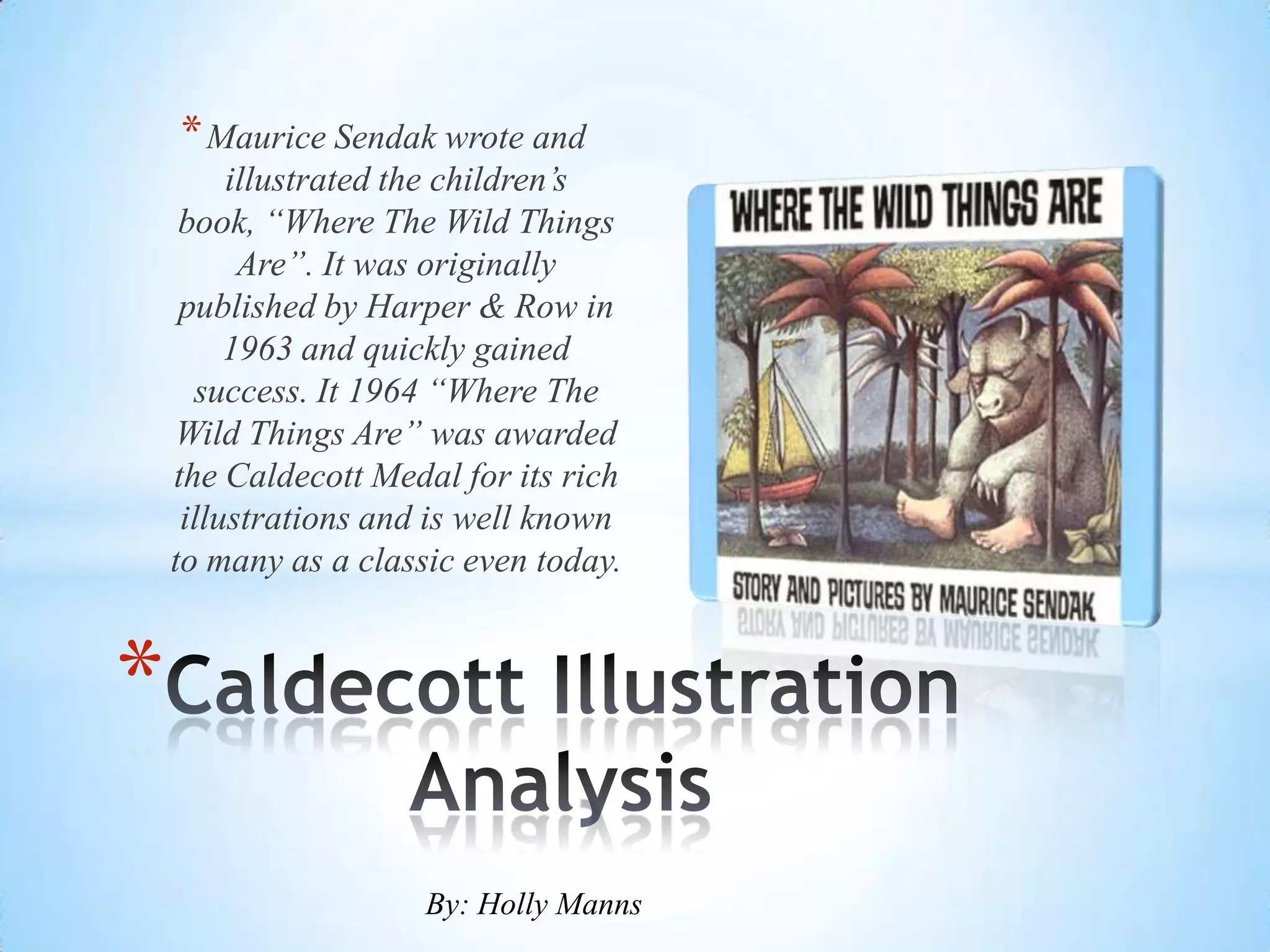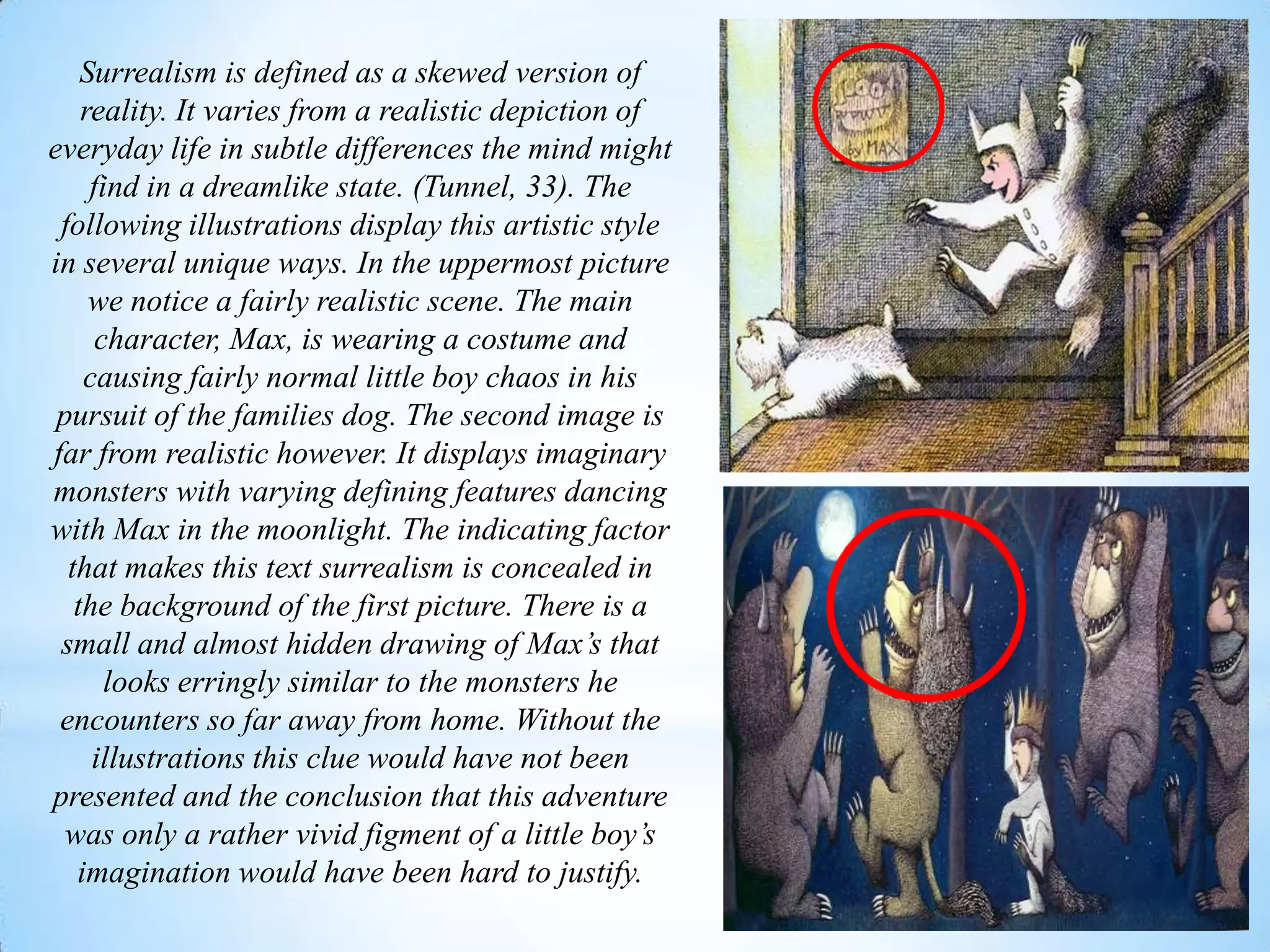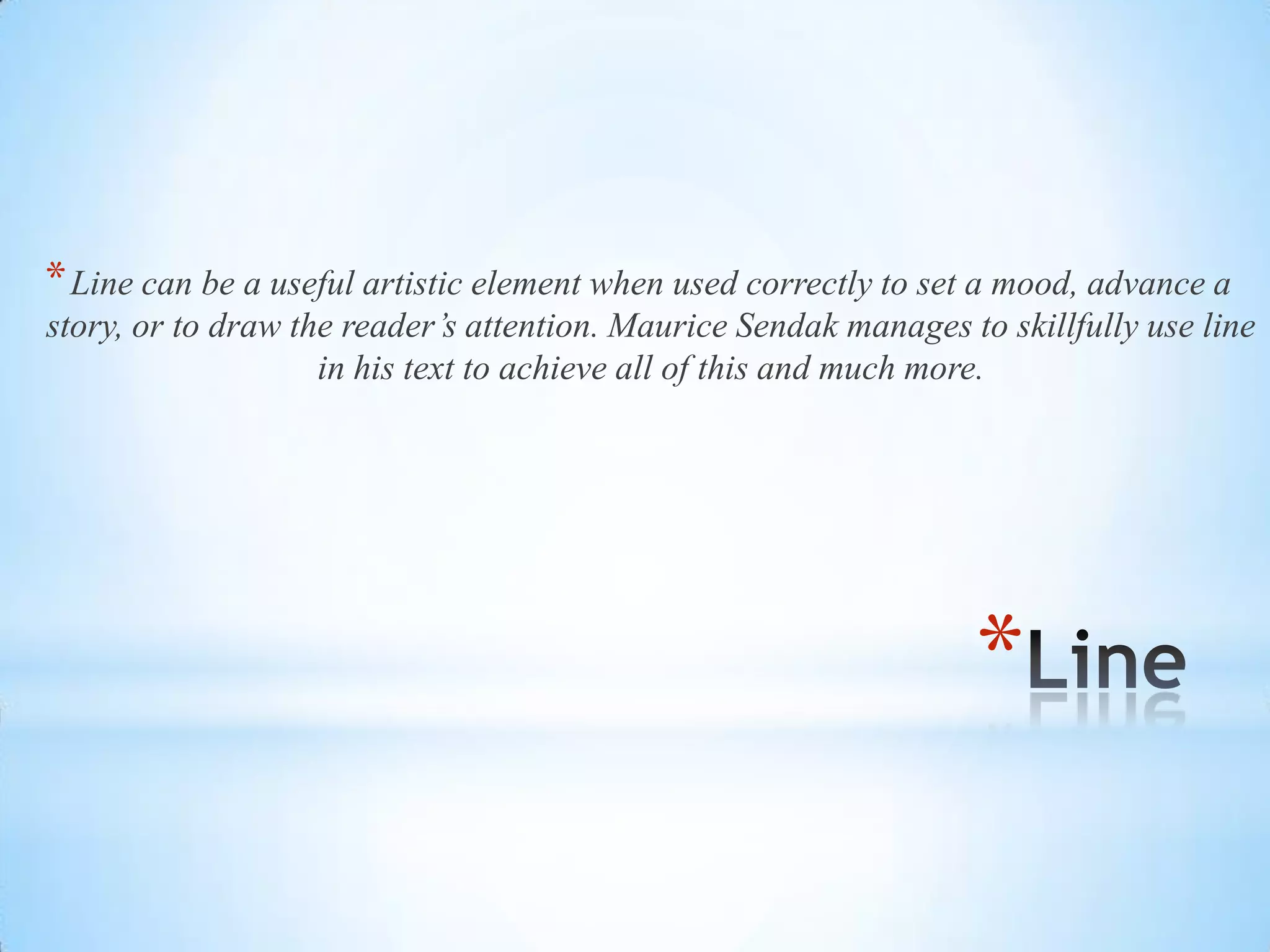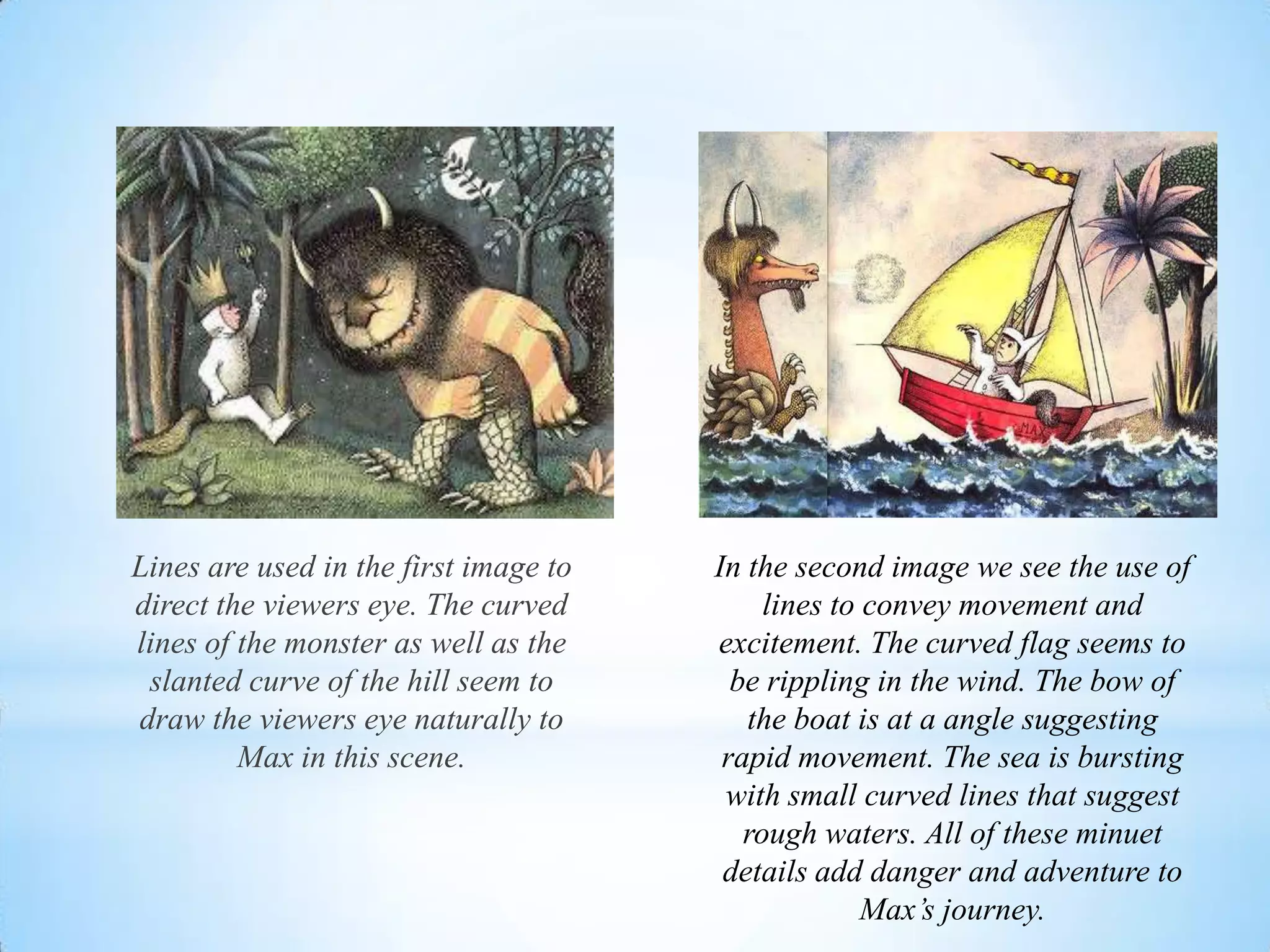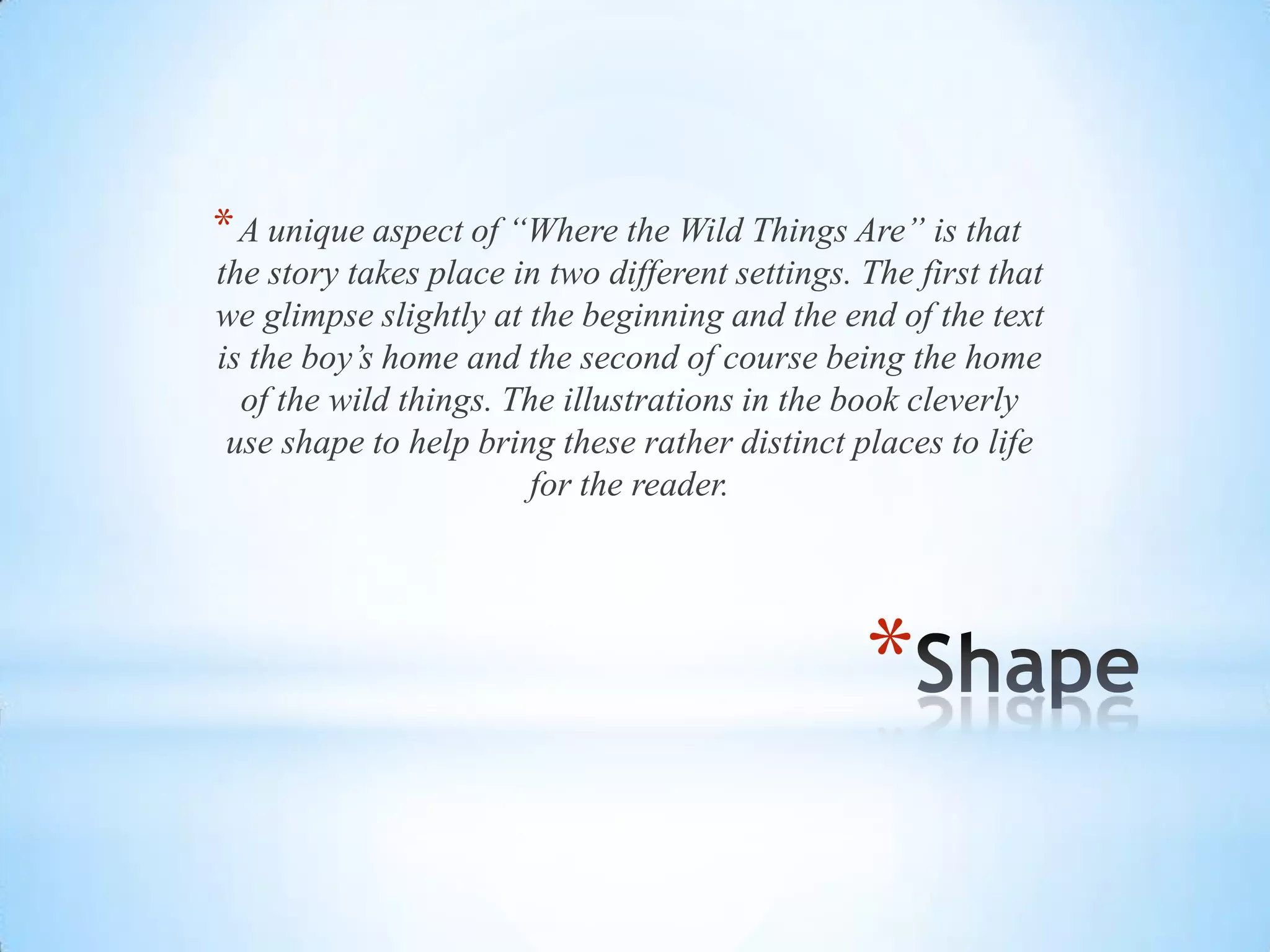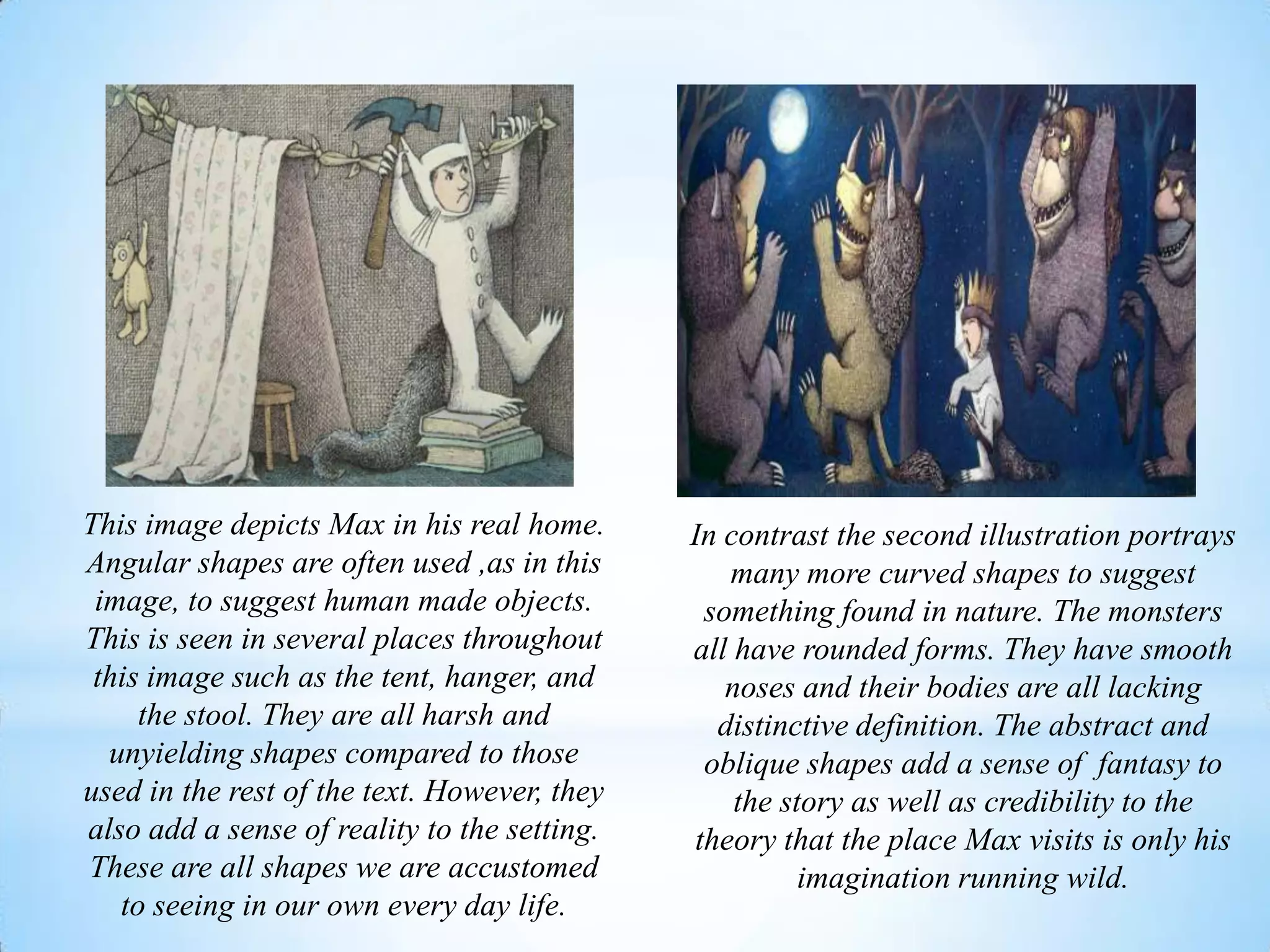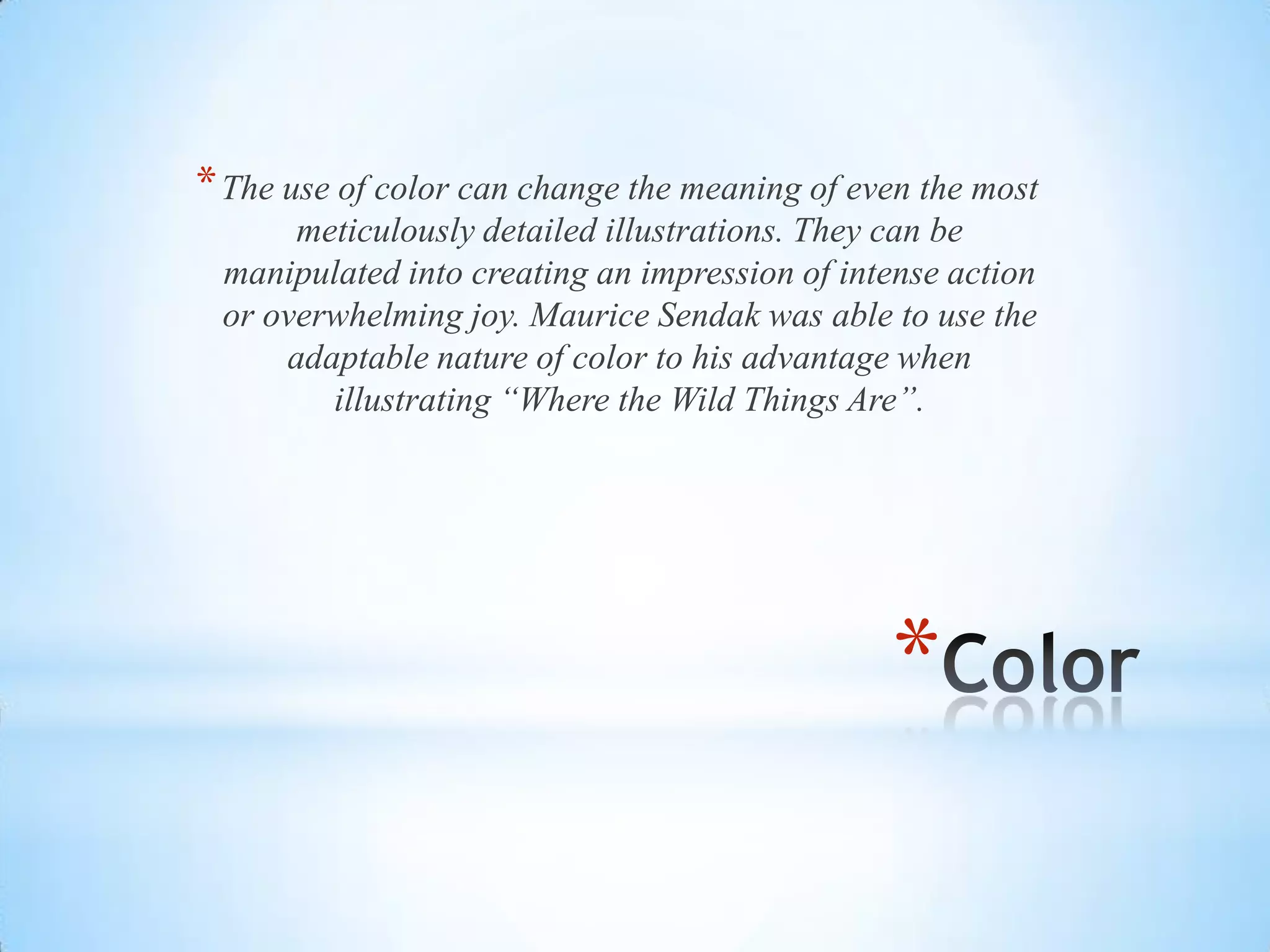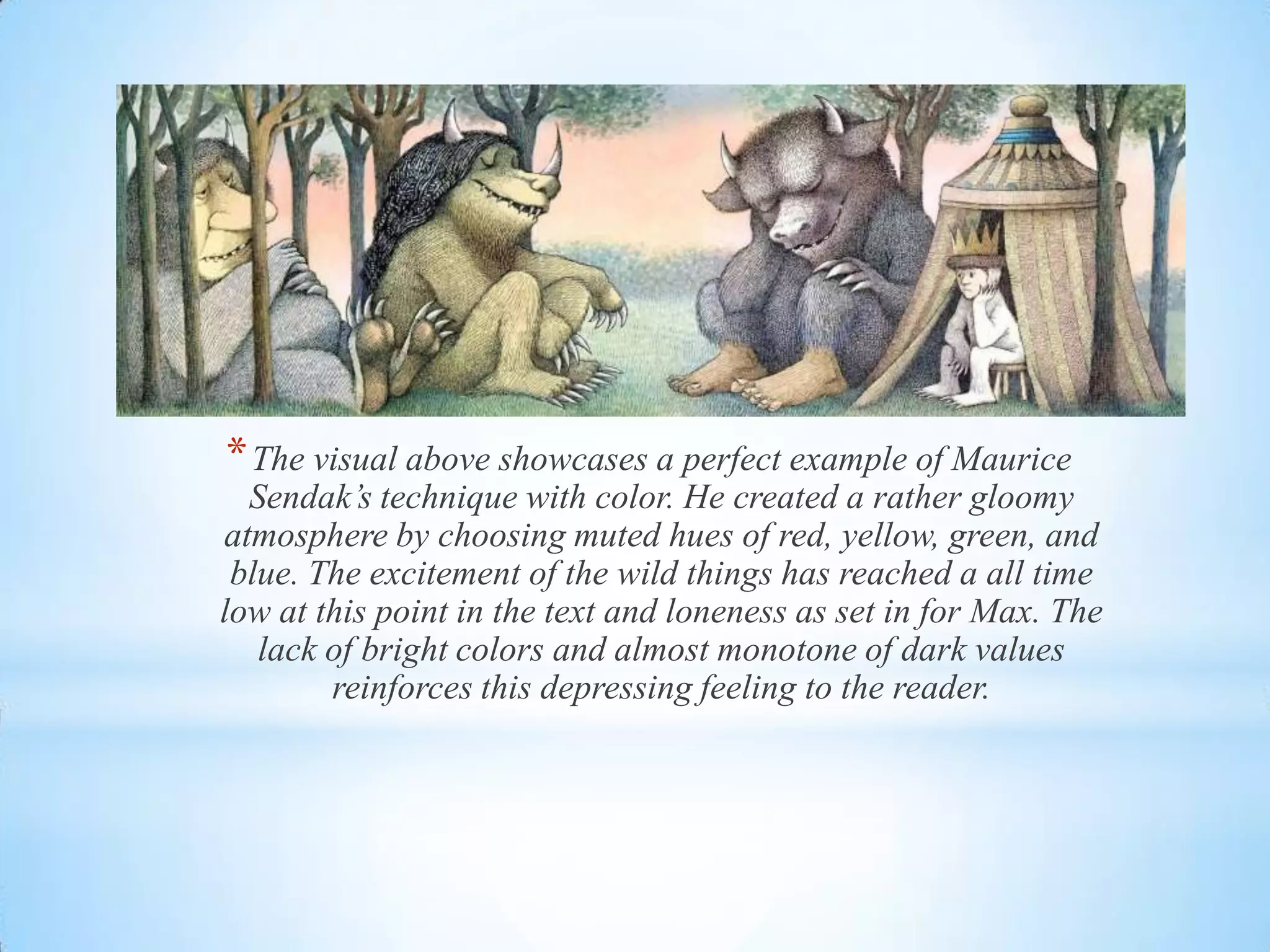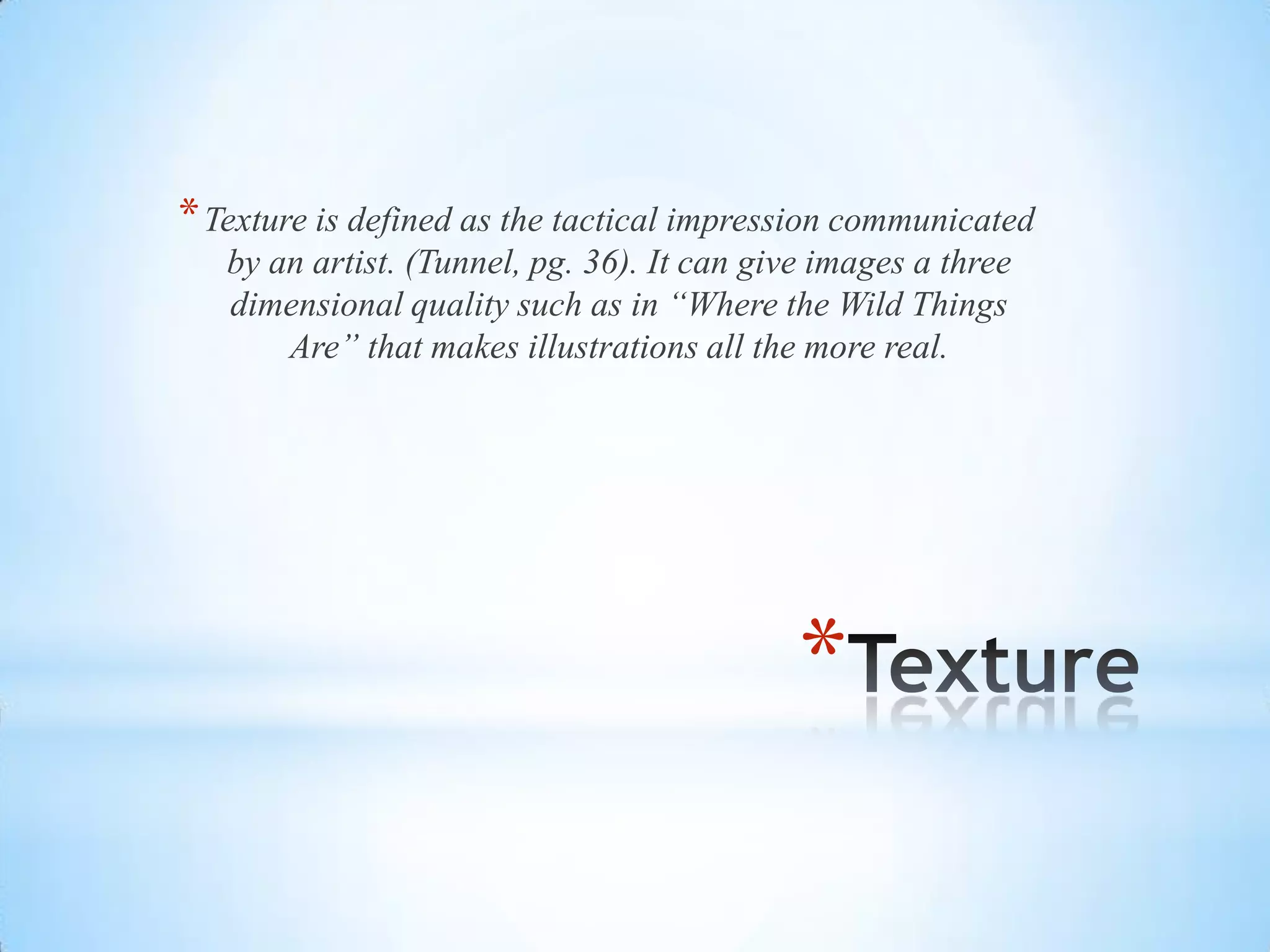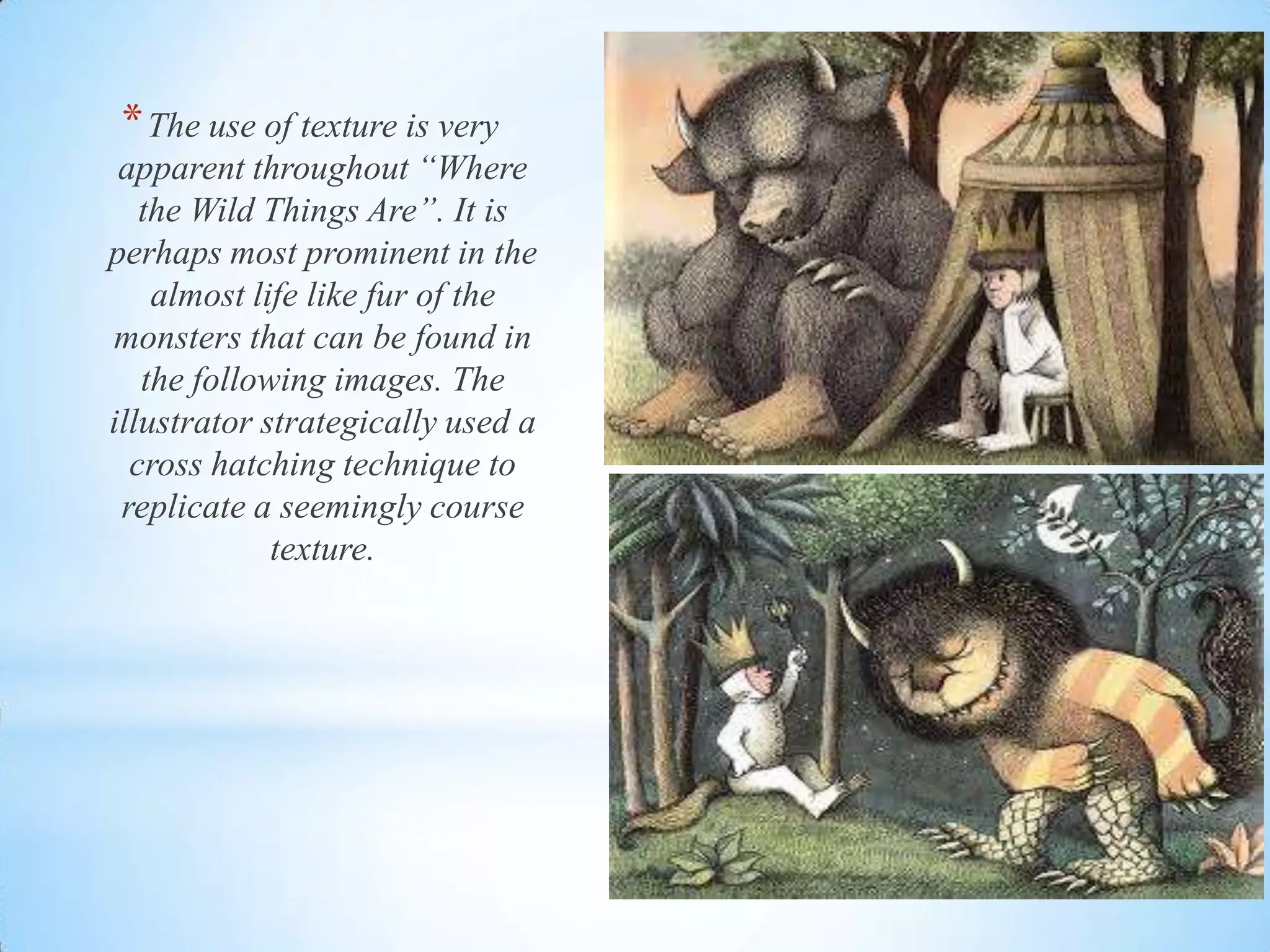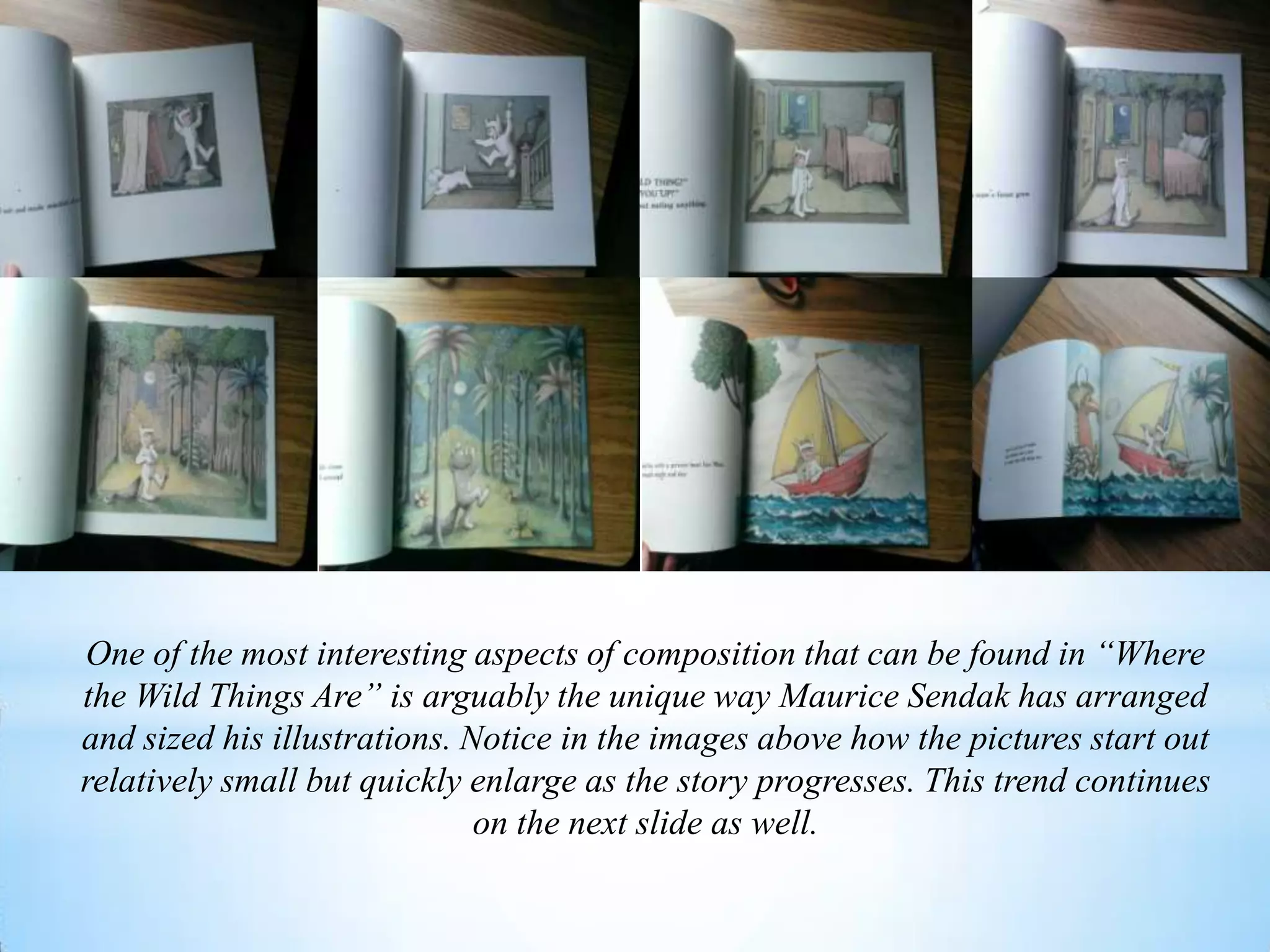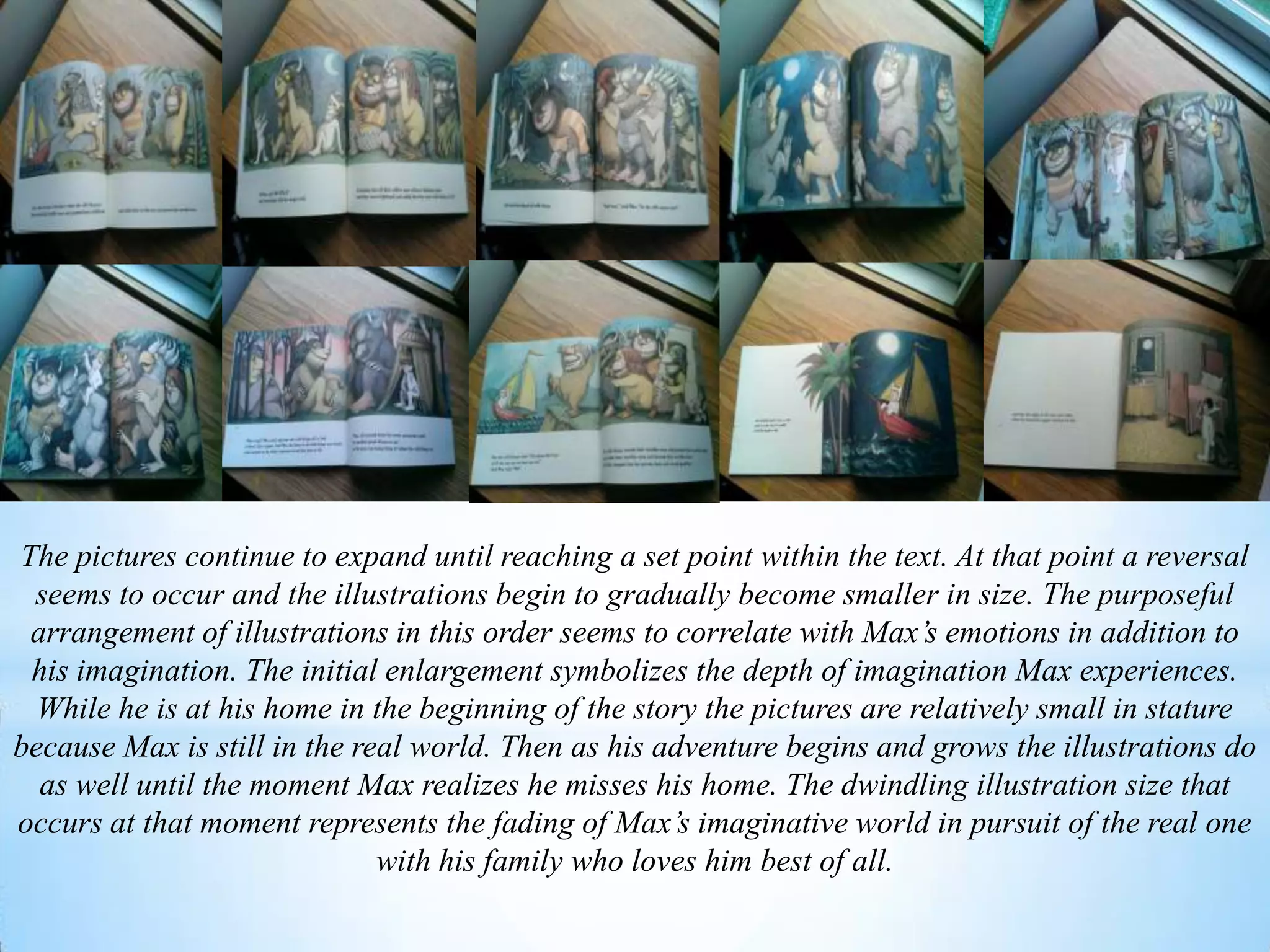Maurice Sendak wrote and illustrated the children's book "Where the Wild Things Are" in 1963. It won the Caldecott Medal in 1964 for its rich illustrations and is considered a classic. The book uses surrealism through fantastical illustrations of monsters, even though the story deals with realistic themes like childhood misbehavior. Sendak skillfully uses elements like line, shape, color, texture, and composition to bring the story and imaginary world to life. The changing size of the illustrations corresponds with the depth of the main character Max's imagination and emotions throughout the story.
